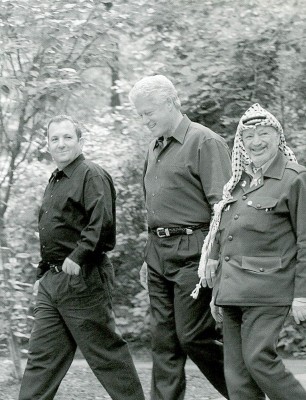67 In contradiction with his image, which was cultivated extensively after his assassination, Yitzhak Rabin continued furthering expansion "on the ground", while simultaneously engaging in the political process for the achievement of peace according to Israeli perceptions. As a disciple of the Zionist "narrative" and its mythology, he suffered from cognitive dissonance when his sincere desire for peace clashed with his conceptual world. This became apparent when he refrained from removing the Jewish settlement in Hebron after the Goldstein massacre of praying Muslims. It appears that he began to internalize some parts of the Palestinian narrative only towards the end of his life.

Camp David, 2000: Ignorance and arrogance
Photo: Barak Ochayon, GPO
68 The case of Shimon Peres is much more damning. He created for himself the international image of a peacemaker and even adjusted his language to reflect this image ("the New Middle East") while remaining essentially a traditional Zionist hawk. This became clear in his short and bloody period as Prime Minister after the assassination of Rabin in 1995 and, again, in his joining the Sharon government in 2001 and accepting the role of